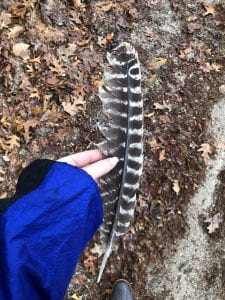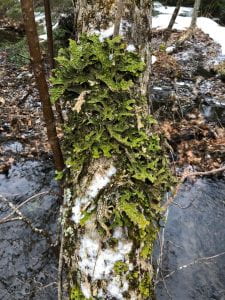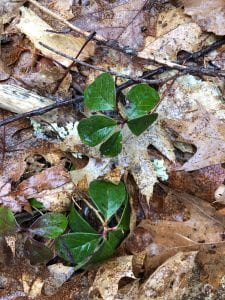Date: March 17, 2020
Location: (43.8873479, -70.4285200), 344.5 ft, About a 5 minute drive down the road from my house, the trail begins at a small turnoff to the left.
Site Description: White pine mixed hardwood forest. Classified in Maine as the transitional forest between the deciduous forests of southern Maine and the spruce-fir forests of northern Maine. This particular forest was hemlock and white pine codominant. The trail was hilly with rocks and small streams, but had no major inclines or declines. The key bird species of this area are American Woodcock, Broad-winged Hawk, Ruffed Grouse, Alder and Great-crested Flycatchers, Black-capped Chickadee, Hermit Thrush, Wood Thrush, Veery, Scarlet Tanager, Red-eyed Vireo, Chestnut-sided and Nashville Warblers, Common Yellowthroat, Ovenbird, Rose-breasted Grosbeak, and Song Sparrow (maineaudubon.org).
Species Description: I saw one black-capped chikadee or Poecile atricapillus perched on a pine try early on in the walk. The bird was small with a white belly, grey wings, and a black head. It was hopping about a branch and chirping its familiar call. Chikadees are the Maine state bird and are resident in New England and they typically do not migrate in the winter. I didn’t see any other birds or mammals on my walk likely due to the winter season and most species migrated or hibernating. However, I did find a large feather that likely belonged to a hawk (Figure 1). As for plant species, I found many interesting specimens. On a tree near the entrance of the trail I saw a lichen with large green leaflike structures with veins (Figure 2). I later identified this species of lichen as Lobaria pulmonaria, which is found in North America but becoming increasingly rare. On an old hemlock stump towards the middle of the trail, I found a reishi mushroom, or Ganoderma tsugae(Figure 3). This fungus was about the size of the palm of my hand, dark maroon in color, and surrounded by moss and some other species of mushroom in a tiny ecosystem of decomposers. The color indicated that it was an older mushroom, as the color darkens as it matures. Reishi mushrooms have a lot of healing properties and are used in many natural medicines. At the base of a tree near a small stream I found two small purple-spored puffballs or Calvatia cyathiformi. They were about the size of pingpong balls and gray in color (Figure 4). This species of mushroom is fascinating because it relies on disturbances such as rain or animals in order to disperse their spores. The entire trail was lined with young teaberry plants, or Gaultheria procumbens. Plants stood no higher than two inches and typically had 3-5 oval-shaped green or purple leaves with dark red-purple stems (Figure 5). These plants are also known as wintergreen and their leaves are often used to make teas that help with indigestion and for general wellbeing.
Narrative: Today I went for a walk in the woods near my house in Raymond, Maine. It was 34ºF with a light mist. Earlier in the morning it had snowed, so there was a fresh dusting on the trail as well as some older areas of snow and ice. the trail was littered with old leaves and variations of pinecones. About half way through the trail to the right, there was a beautiful stream which I followed up until I saw where the rapid movement met a more still area where I saw some water plants. I didn’t see any mammals, but I saw some evidence such as scat and rocks where small mammals had chewed apart pinecones and left remnants. I saw many plant species and even took some usnea that fell onto the path for its antibiotic and medical properties.
Photos and Media:
https://www.usgs.gov/media/images/a-lichen-maine
https://statesymbolsusa.org/symbol-official-item/maine/state-plant-state-food-agriculture-symbol/wintergreen
https://www.maine.gov/dacf/mnap/features/communities/hemlockforest.htm
http://mushroom-collecting.com/mushroomreishi.html
Alden, Peter. National Audubon Society Field Guide to New England. Alfred A. Knopf, 1998.






Leave a Reply